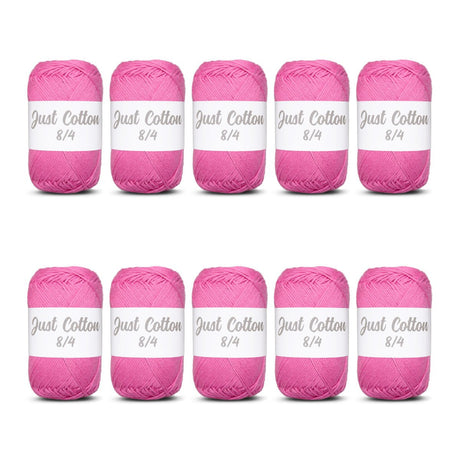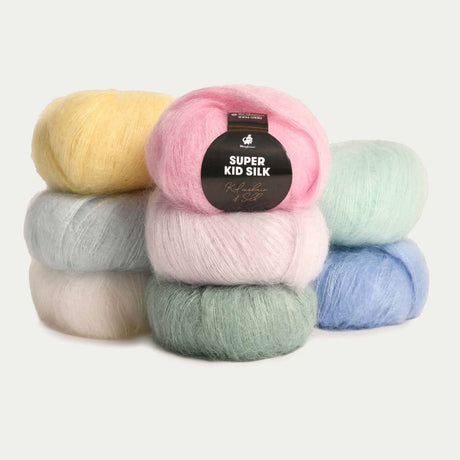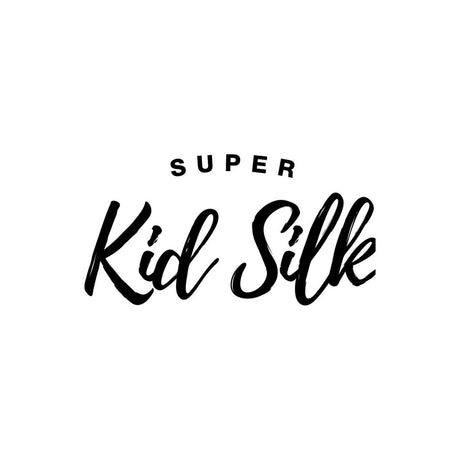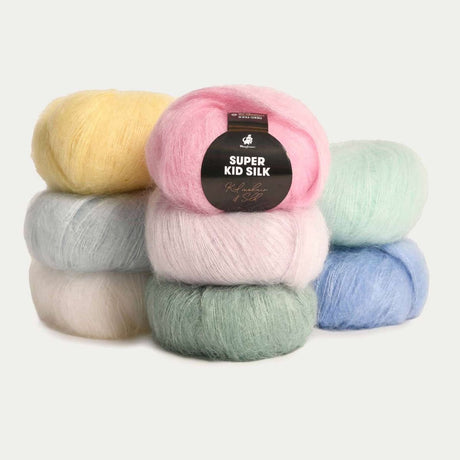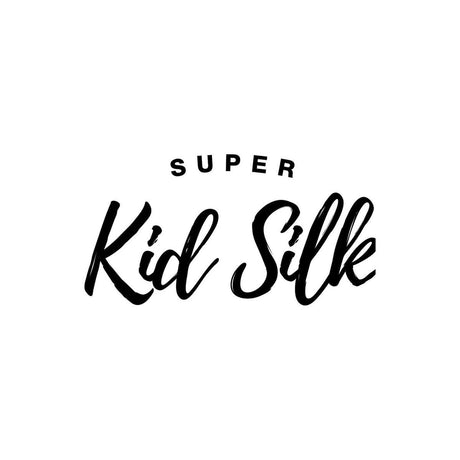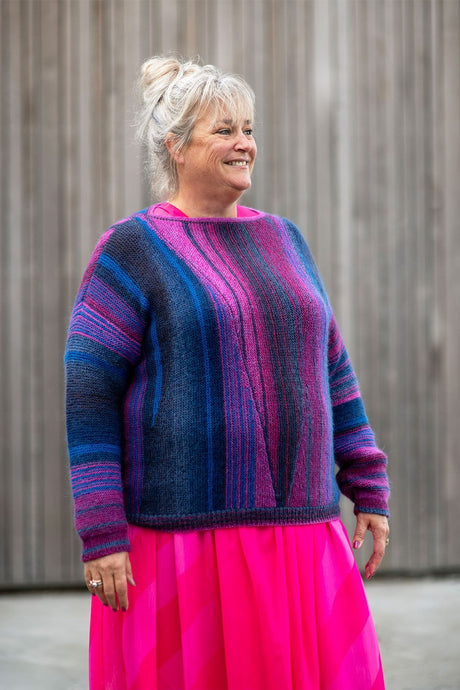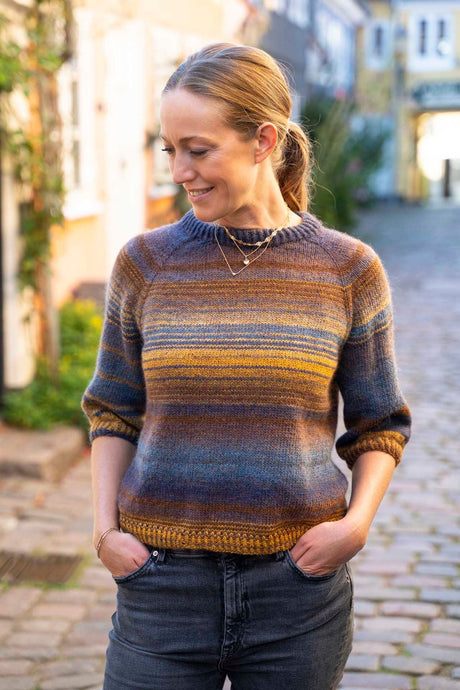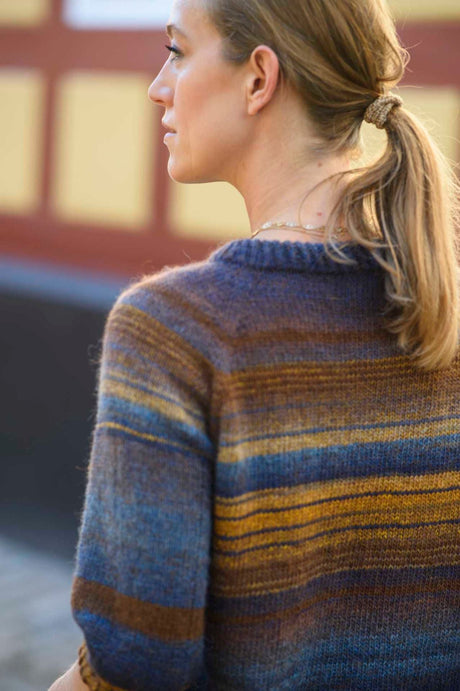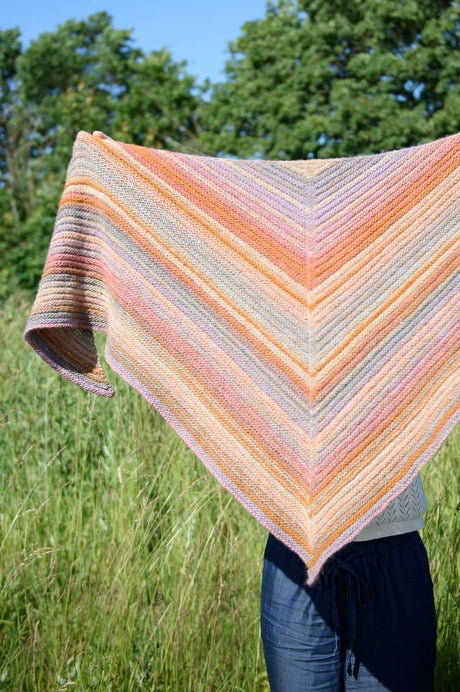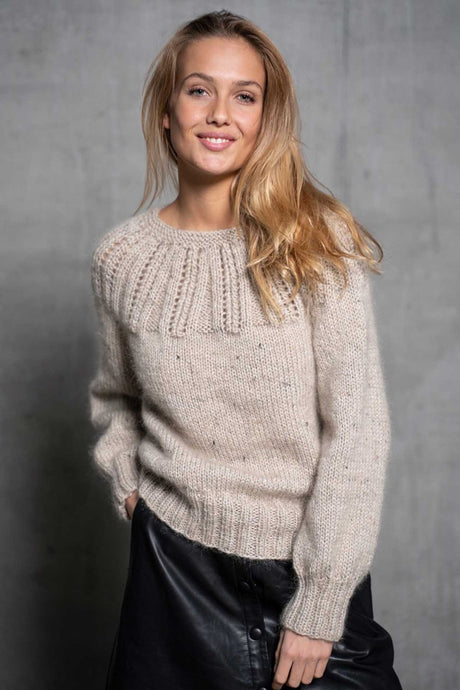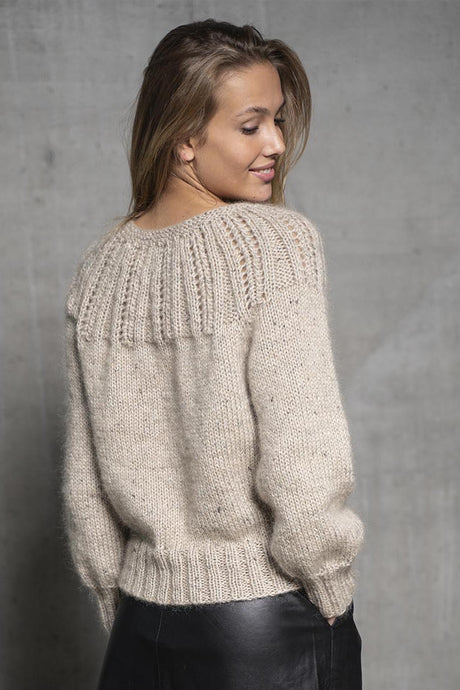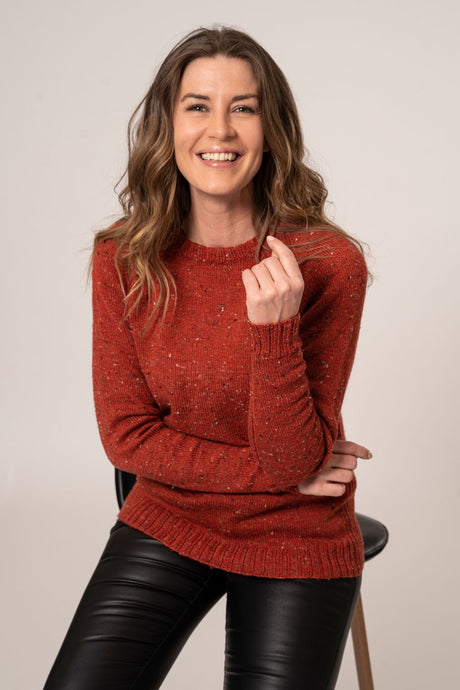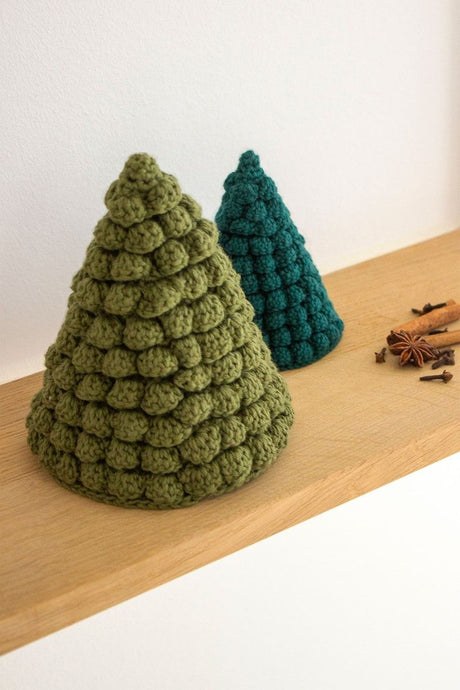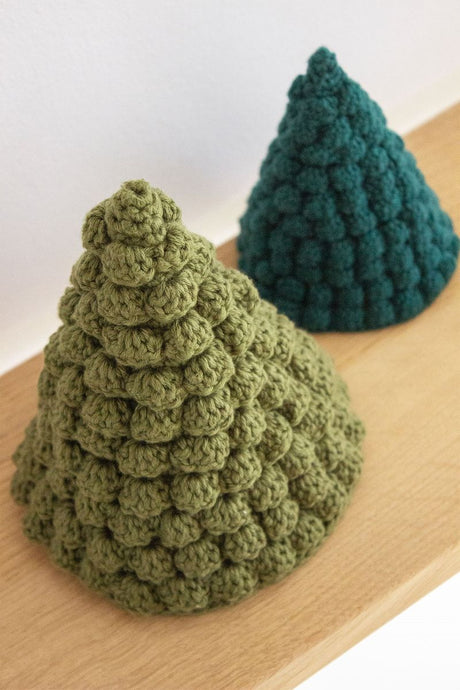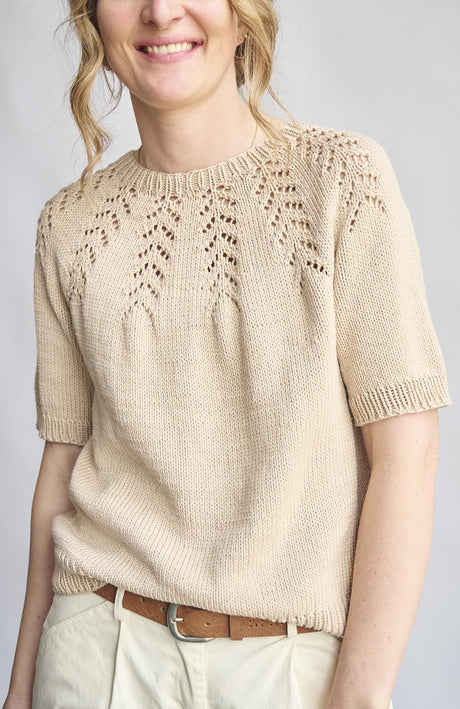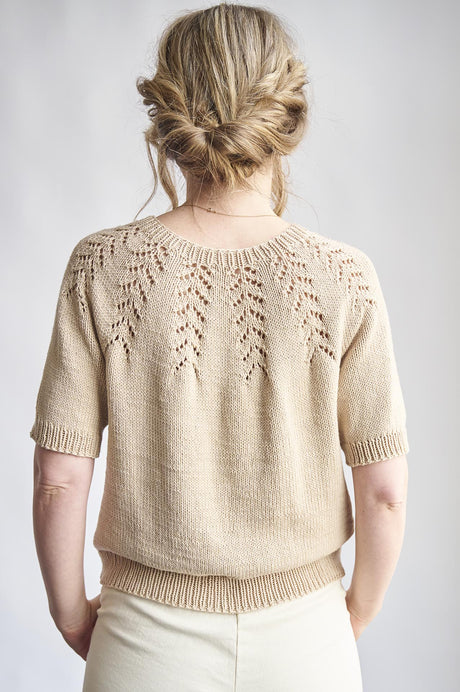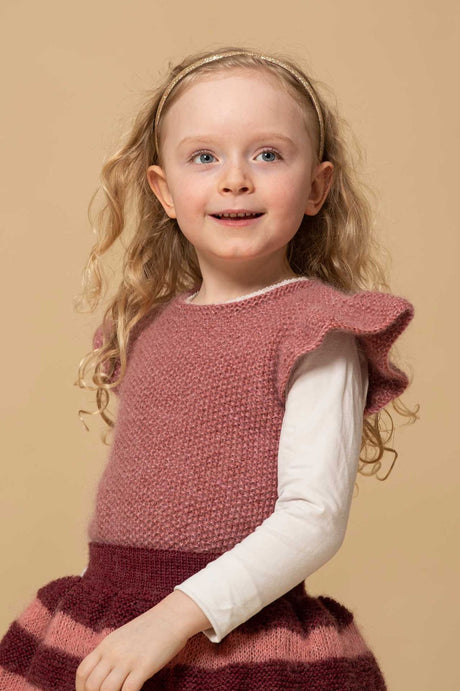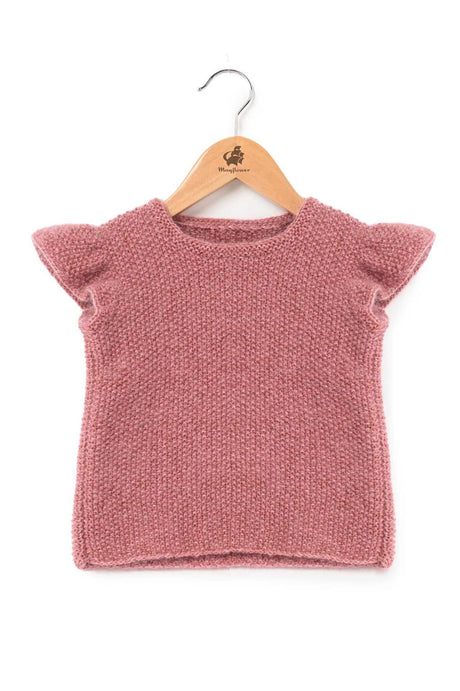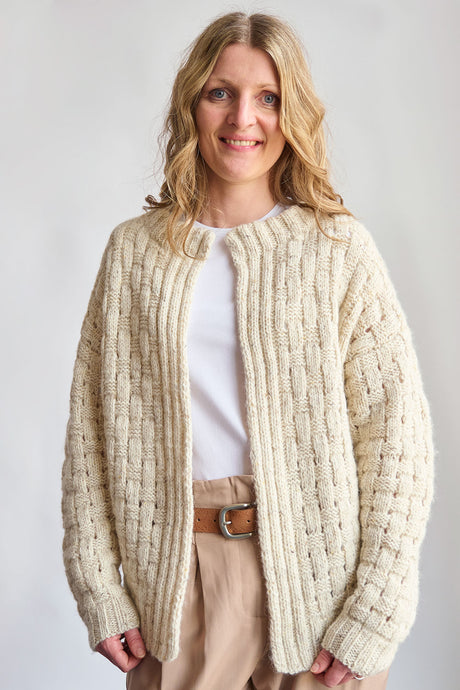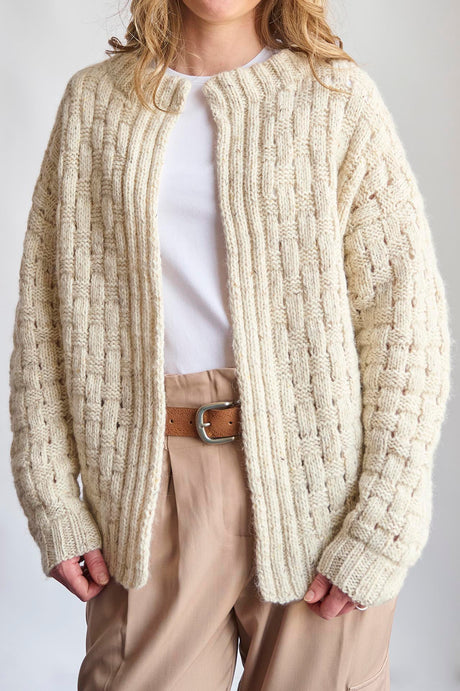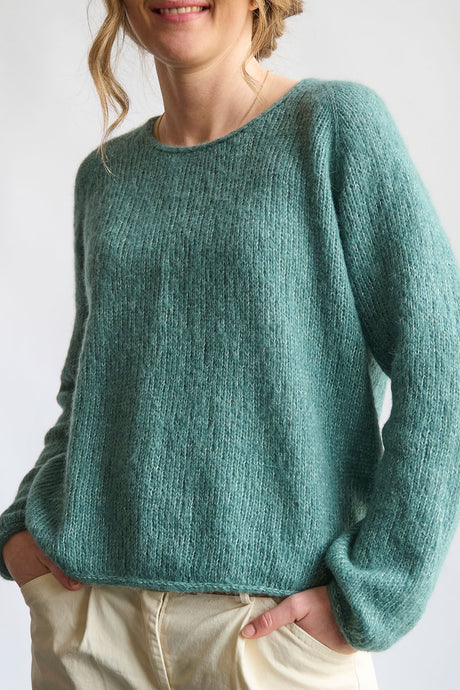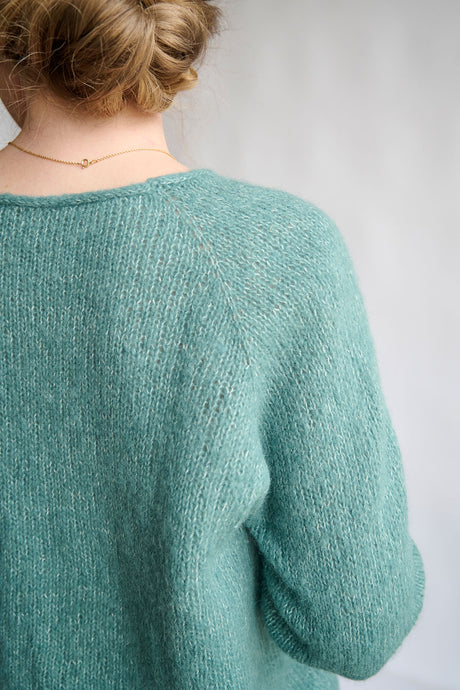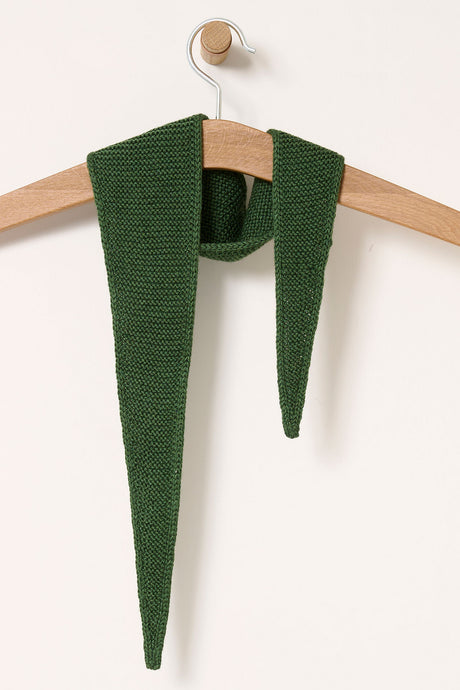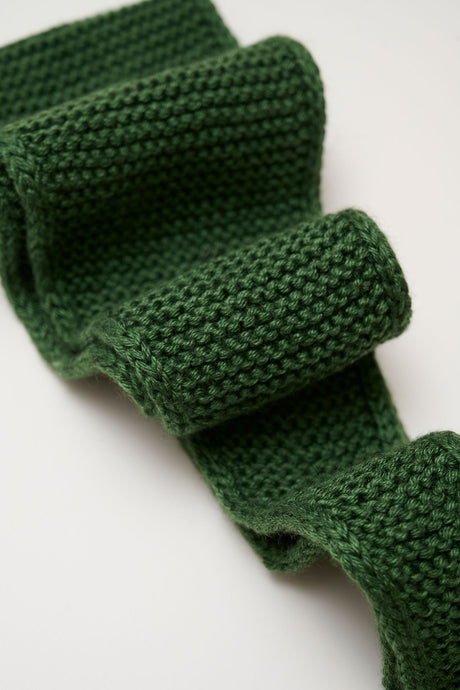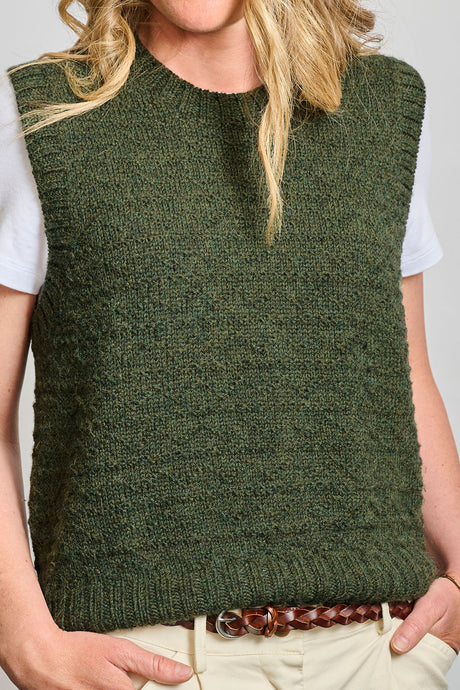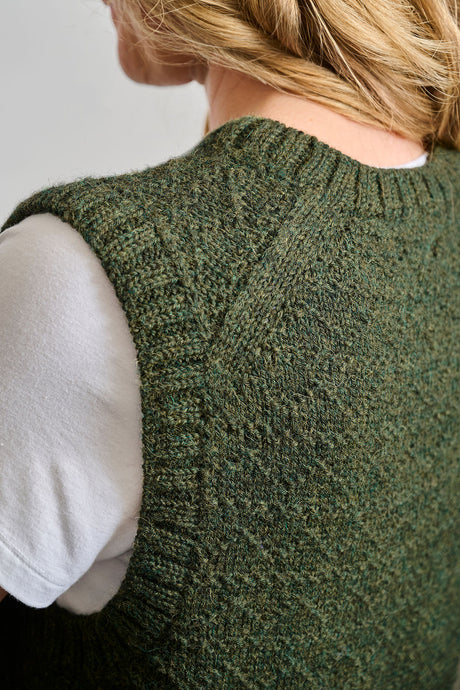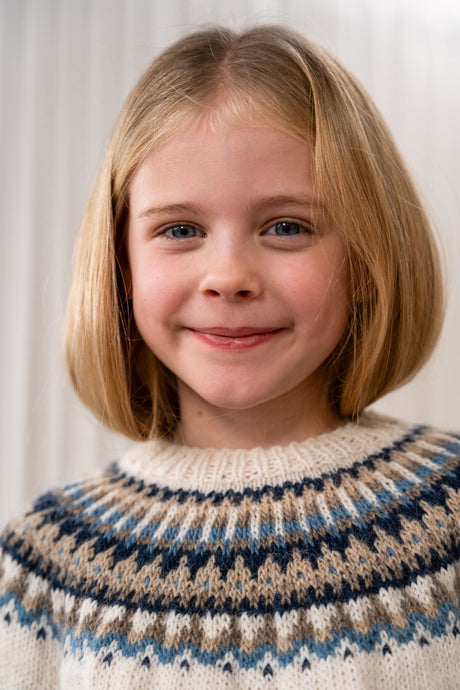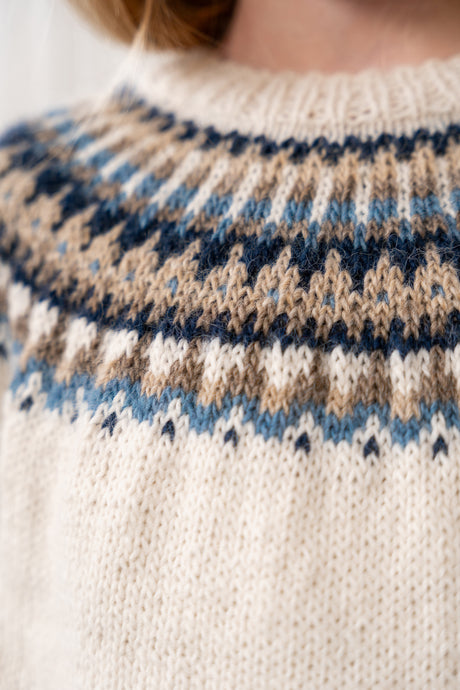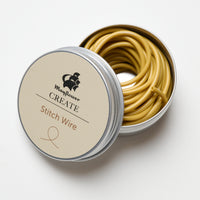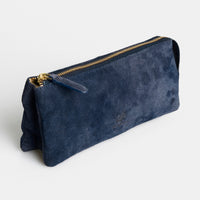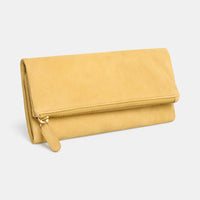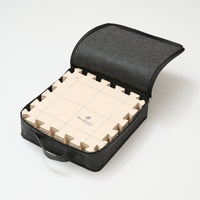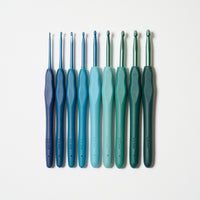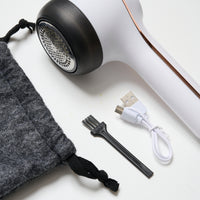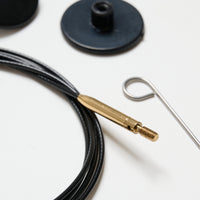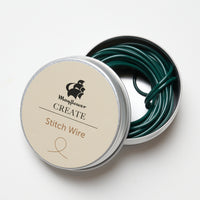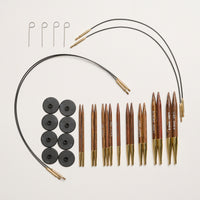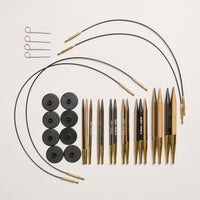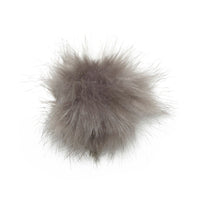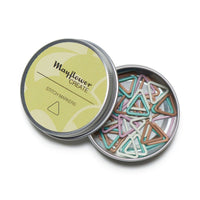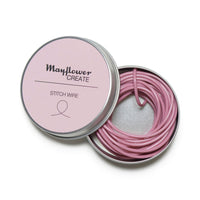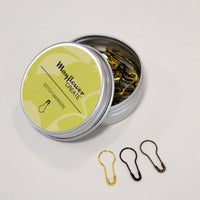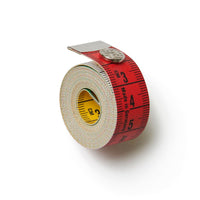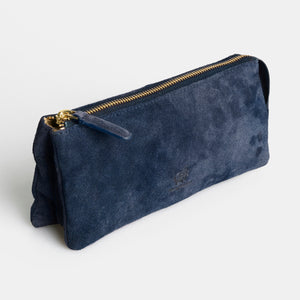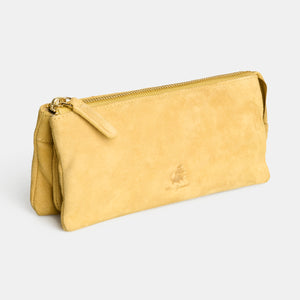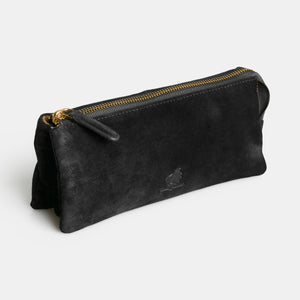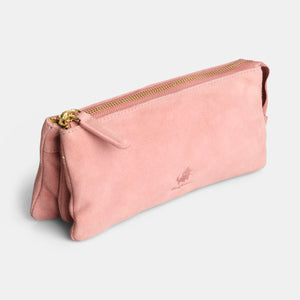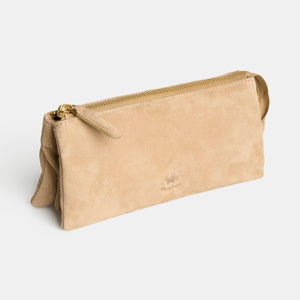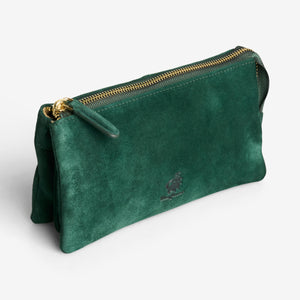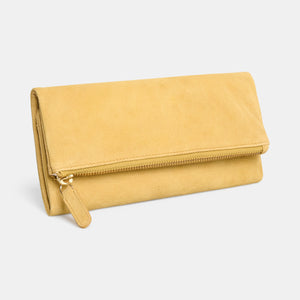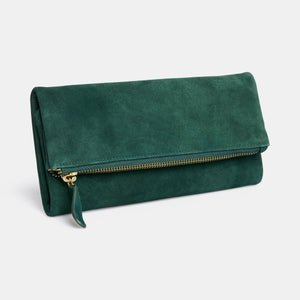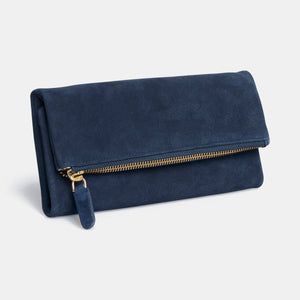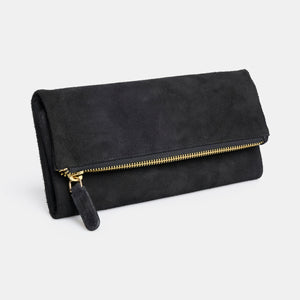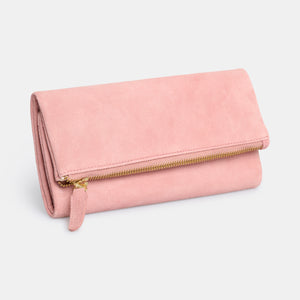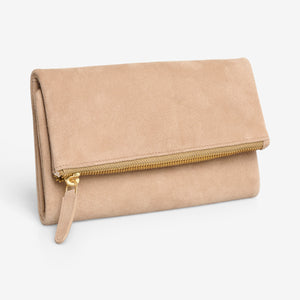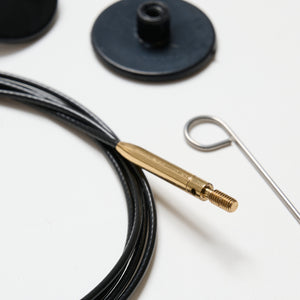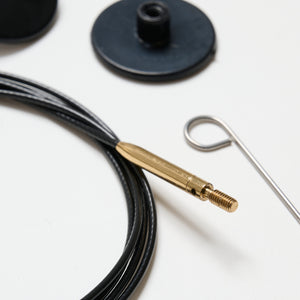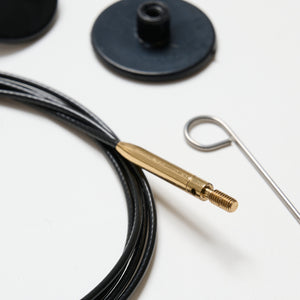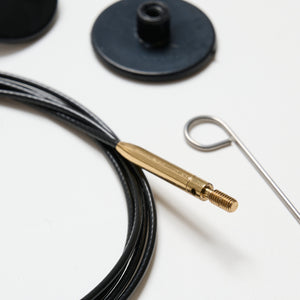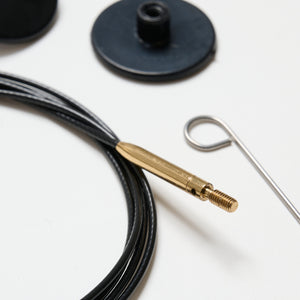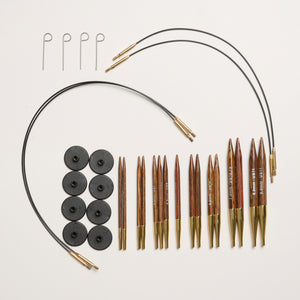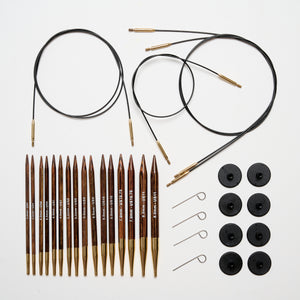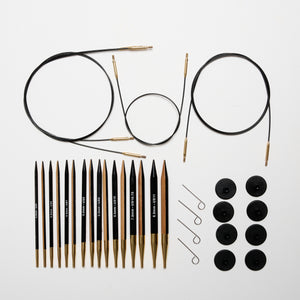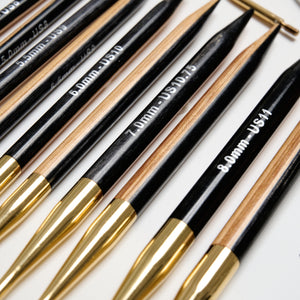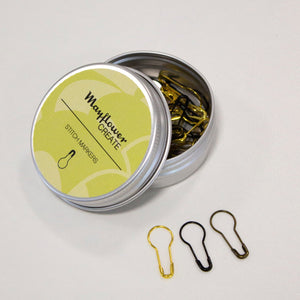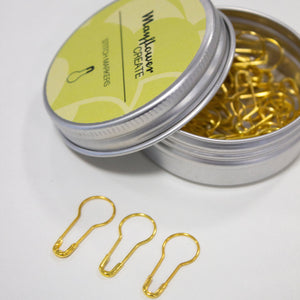- Featured
- Bestsellers
- Alphabetical, A-Z
- Alphabetical, Z-A
- Price, low to high
- Price, high to low
- Date, old to new
- Date, new to old
FiltersFilter and sort
-
 Shop now
Shop nowONLY 8,07 EURO
Just Cotton 8/4 10-pack
-
Mayflower
76% Mohair; 24% Silk
From 8,07 EURPrice per item322,80 EUR /kgUnavailable+54 -
Mayflower
76% Mohair; 24% Silk
4,03 EUR7,40 EURPrice per item161,20 EUR /kgUnavailable+33
Popular Patterns
See allMohairgarn comes from the angora and is one of the most exclusive, natural fibers in the world as Mohair has a fantastic fiber structure.
Mohair is characterized by being very fine, curly and extremely soft. The amazing wool has a very insulating and warming feature, as well as it is also heat regulating and breathable. This property is of great importance to the angora, which lives in very hilly terrain with severe temperature differences, where they must be able to maintain an appropriate temperature around the clock and year round. And the same cooling and warming properties also apply in the yarn, which is spun on the luxurious fibers. Mohair is therefore also one of the most sought -after yarn qualities for both knit and crochet as it can be used all year round.
Yarn with soft and exclusive properties
Mohair fibers are thus several of the same good properties as wool fibers, but are still different.
Wool fibers from sheep are by nature rough and are by nature made in such a way that the sheep's skin secretes fat, which puts a water -repellent layer on the sheep's fur to make sure it can stay clean and dry. This fat is called lanolin.
However, the mohair fibers are much more smooth, light and mugged, which means that debris and water cannot get stuck. In other words, mohair yarn does not contain lanolin, which is an advantage for those who are allergic to precisely lanolin. Since the mohair fibers are very smooth, it also means that Mohair by nature is a really soft fiber that feels absolutely fantastic against the skin used for eg a cardigan or a shawl. Mohairgarn is therefore very suitable for people lanolin allergy or very delicate skin or those who will be absolutely sure not to get Yarn, that is scratching.
In addition, Mohair is a very durable and also elastic yarn due to the fiber structure. The elasticity is an advantage when it comes to knitted and crocheted clothing such as a sweater, as it will automatically be easier and more comfortable to wear and move in. The high abrasion resistance means that the shirt will be able to hold long -term frequent use .
In other words, Mohair Yarn has some amazing properties that are transferred to the yarn, which is spun with the delicious mohair fibers. You therefore get a nice and exclusive year -round yarn with many uses.
The fluffy look of the yarn
Mohair yarn has a very glossy shade, just as it has a fluffy and woolen look with soft fibers. The lightweight fiber is spun to an incredibly airy yarn quality that you can use to knit or crochet a fantastic light blouse that will in no way feel heavy to wear.
Mohair fibers are typically spun together with other fibers of eg wool or silk to give the yarn an even better fiber composition. The structure remains extremely light, airy and wonderfully soft.
Mohairgarn welcomes color and is therefore typically found in a myriad of different shades - from the classic and natural colors to the pang colors with much more bang on the color spectrum. Mohair yarn is available in both solid and print variants, where the yarn color itself creates a pattern while knitting or crocheting.
Mohair as a consequence
Since the mohair yarn is a relatively thin and fine yarn, it gives you many options for variation, and you can, for example, use Mohair as a consequence with another and more thick yarn such as Wool yarn. With a consequence in Mohair, the final knitting or crochet result, such as a sweater, will appear more voiced, fluffy or sprawling than if you had knit exclusively with wool. In other words, the mohair yarn gives a delicious structure and an extra luxurious 'touch' to the finished result.
At the same time, if you use a consequence of Mohair in a different color than the other yarn, you will have a super nice floured color effect that gives your knit or crochet some life and a unique look.
You can also easily knit with one thread of mohair yarn alone and thus get a nice, airy and perhaps easily transparent result. You can also knit more more threads mohair yarn at once and thus get a slightly thicker and more wavy knit or crochet result. If you knit with several threads of Mohair at once, you again have the opportunity to switch between the colors and use different shades to achieve a very unique color combination that will be almost impossible to emulate.
Mohairgarn's properties
As you know, Mohair is a fantastic fiber for yarn with many advantages, and there are also a few drawbacks to be aware of. But when you know the properties of the mohair yarn, it becomes easier to get the most out of the yarn and use it in the right knitting and crochet projects.
Benefits of Mohairgarn
- Warm and insulating when it is cold
- Breathable and cooling when it's hot
- Great soft
- Glossy cut
- Light and airy
- Durable
- Water resistant
- Dirt repellent
- Does not contain lanolin and is therefore good for people with delicate skin
Disadvantages of Mohairgarn
- Traps a little (denses though after being used sometimes)
- Is not recommended baby knit because it traps
- Should be hand -washed
Good knitting projects for Mohairgarn
The softness and elasticity of Mohair makes the yarn a very comfortable quality to crochet or knit with. The good stretability makes it easier to knit with, and it therefore feels less strenuous to the hands.
Mohair has a structure and properties which means it is particularly suitable for specific recipes. Mayflower Has a variety of recipes for mohair yarn, or where mohair yarn is included as a companion, as well as using Mayflowers Mohair Yarn in others designer crochet or knitting patterns as an alternative yarn. Just remember to check the knitting strength before you start to make sure you follow the recipe's recommendations.
Good for summer or winter clothes?
The properties of the mohair yarn mean that the yarn is suitable for both warm winter clothes as well as airy and cooling summer clothes. The more threads mohair yarn you use on one yarn, the thicker and warmer, for example, becomes a sweater. The natural insulating effect therefore becomes even bigger and better.
If you knit with, for example, only one thread Mohair, you get an airy and thin, almost transparent blouse or top, which will feel absolutely fantastic on a hot summer day. Do you knit with Mohair as a consequence for eg Cotton GarN, which has a fiber content that makes it very suitable for summer clothing, you get comfortable summer clothes with a fluffy look that is beautiful and breathable.
Suitable for structure and pattern strip
If you would like to knit or crochet in pattern or structure, woolen yarn like Mohair is a nice choice. The woolen look gives a nice effect, where the use of, for example, different colors merge nicely, just as structures such as twists emerge nicely. The natural elasticity gives the structural strip a pleasant resilience, which makes it nice to wear, just as it holds the shape.
Washing and maintenance of mohair yarn
Mohair yarn must be washed very gently and by hand. The recommended is at a maximum of 30 degrees. The detergent must be for wool and should preferably be distributed well in the water before the clothes are added therein. Then the clothes just need to be gently moving around the water as it is neither scrubbed nor twisted hard. The yarn's fine and light mask structure will otherwise be able to damage and shift. Finally, the clothes need to be flushed well to be sure to have all the soap away. The clothes are twisted by putting it on a towel, which is rolled together to squeeze the water out without twisting the clothes.
The clothing must subsequently be dry and must not be tumbled.
FAQ about Mohair
What is mohair and where does mohair come from?
The wool, which is used for the production of mohair wool, comes from the angora and is one of the most sought after and exclusive fibers in the world because of the good and soft properties of the wool. The Angoraged is originally from Turkey, but today lives in several places in the world.
The fiber of the mohairulde has a unique property to adapt to the climate in which the angoraged lives. A country with very varying climate that offers both hot summers and cold winters means that there has been a need for the coat to adapt to it that temperature. Mohair wool is therefore perfect for all types of climate as the wool is both hot, temperature -regulating and breathable.
Mohair wool also contains no lanolin, which is good for this, which is allergic to precisely lanolin and therefore cannot withstand wearing clothes made of woolen yarn, as their skin will otherwise respond with, among other things. itch. Since the mohair fibers by nature are very smooth and soft as well as light and mugged, dirt, dirt and water cannot automatically get stuck in the coat. Mohairgarn is therefore an obvious yarn choice for people with very delicate skin or lanolin allergy.
How do I wash mohair?
A sweater, cardigan or shawl that is crocheted or knitted in mohair yarn must be washed very gently and by hand.
It is recommended to wash the yarn at max 30 degrees. The wool detergent must be distributed well in the water before putting the clothes in. Then the clothes must be gently moving around the water and must not be scrubbed or twisted hard. The fine and light mask structure of the yarn will easily be able to damage or shift. Finally, the clothes need to be rinsed well to get the soap out. The clothes put on a towel and twist by rolling it together and thus squeezing the water out without twisting the clothes.
The clothing must subsequently be dry and must not be tumbled.
Claws mohair?
Mohair is one of the woolen qualities that fits well with even the delicate skin and to people who are allergic to Lanolin found in the traditional woolen yarn.
Mohair is a very smooth, lightweight and frizzy fiber. Since the fibers by nature are very smooth, you will not find the same scales on the mohair fibers that you find on the wool fibers. Therefore, mohair yarn will also automatically feel much softer and more comfortable and will therefore not be perceived to be bothersome to the skin.
Something else that can bother the skin is lanolin. On sheep wool there is lanolin that comes from the skin of the sheep. The lanolin lays as a thin water and dirt repellent coating on the sheep's fur. Since the mohair fibers are so soft and curved, they are completely automatically secured against both dirt and water, and therefore the angora does not secrete lanolin. Mohairgarn is therefore a fantastic yarn for people who are allergic to Lanolin.
What is Kid Mohair?
Kid Mohair is an even finer and softer yarn quality than Mohair. The finished yarn therefore becomes absolutely fantastic and can be knit or crocheted to absolutely incredibly comfortable clothing or accessories, which are airy and feels nice to wear.
Why don't you use Mohair yarn for baby?
Since mohair yarn has small, visible fibers and is a very woolly and lightly soldered yarn, it is not recommended to use the yarn for children as under 1 year. The baby can get the mohair fibers in the mouth where they can be bothersome. Although one recommends soft yarns for baby, then baby yarn Do not stab or scratch, and although Mohair is a very soft yarn, Mohair is not recommended for baby because of the loose fibers. In addition, it is a great advantage of using yarn for baby that can be machine washed as it is much easier to keep in the busy everyday life. Buy mohair online at Mayflower
Here at Mayflower Are we really happy to offer a large selection of this delicious yarn type. Mohair is the right choice for those who would like to embark on a knitting or crochet project with one of the most exclusive yarn types on the market because you would like to pamper yourself or one that you love. Mohairgarn can be used to create delicious clothes in many different shades, and with the large selection here at the webshop you always have plenty of opportunity to find just the yarn that you dream of.
You can even buy Mohair in a wealth of different shades of color.
Save money and enjoy the convenience
No matter what you choose, you get mohair wool in the highest quality and always at a really good price. When you shop online, you can save a good deal of money on your next purchase, which means a great deal when it comes to an exclusive yarn type like Mohair.
And the best thing about it all is that you can handle it all online at home from your sofa. You just have to sit back and be inspired by our large selection of safe and homely surroundings, which is why the shopping experience will not be more comfortable than it does with us.
Of course, we also send your order directly to your front door shortly after you have ordered so you don't have to wait long to get started with your knitting or crochet project.
Buy mohair online at Mayflower
Here at Mayflower Are we really happy to offer a large selection of this delicious yarn type. Mohair is the right choice for those who would like to embark on a knitting or crochet project with one of the most exclusive yarn types on the market because you would like to pamper yourself or one that you love. Mohairgarn can be used to create delicious clothes in many different shades, and with the large selection here at the webshop you always have plenty of opportunity to find just the yarn that you dream of.
You can even buy Mohair in a wealth of different shades of color.
Save money and enjoy the convenience
No matter what you choose, you get mohair wool in the highest quality and always at a really good price. When you shop online, you can save a good deal of money on your next purchase, which means a great deal when it comes to an exclusive yarn type like Mohair.
And the best thing about it all is that you can handle it all online at home from your sofa. You just have to sit back and be inspired by our large selection of safe and homely surroundings, which is why the shopping experience will not be more comfortable than it does with us.
Of course, we also send your order directly to your front door shortly after you have ordered so you don't have to wait long to get started with your knitting or crochet project.
Achieve sheen and comfort with mohair and silk yarn mixtures
When you knit with mohair yarn, you will often notice on the label that it is mixed with silk. Mayflower Mohair also consists of a combination of these two materials. However, there is always a larger proportion of mohair in the yarn than silk. This applies both in our Super Kid Silk, Super Kid Silk Print and Super Kid Silk Outlet. These consist of approx. of 2/3 mohair and 1/3 silk.
The composition of these materials is popular for several reasons. Mohair yarn in its pure shape is soft and light, but when combined with silk, magic occurs between the materials. It creates a yarn quality that is not only extremely comfortable to work with, but which also results in finished knitting projects with a beautiful shine. Mohair-silk blends are a popular choice among knitters that go up in quality.
Which of our recipes can you knit with mohair yarn?
It can sometimes be nice with inspiration if you have any doubts about what to knit. We have many crochet and knitting patterns in Mohair wool you can download today. With ours Super Kid Silk Print—Garn you can, for example, knit our popular Konkylie shawl. If you want to make recipes with thick mohair and yarn in other materials, it may be obvious to knit a fluffy cardigan, vest or hat.
Do you prefer organic yarn with recognized certifications? To make it clear we've compiled our entire choice of organic yarn on an overall page that you find here.

